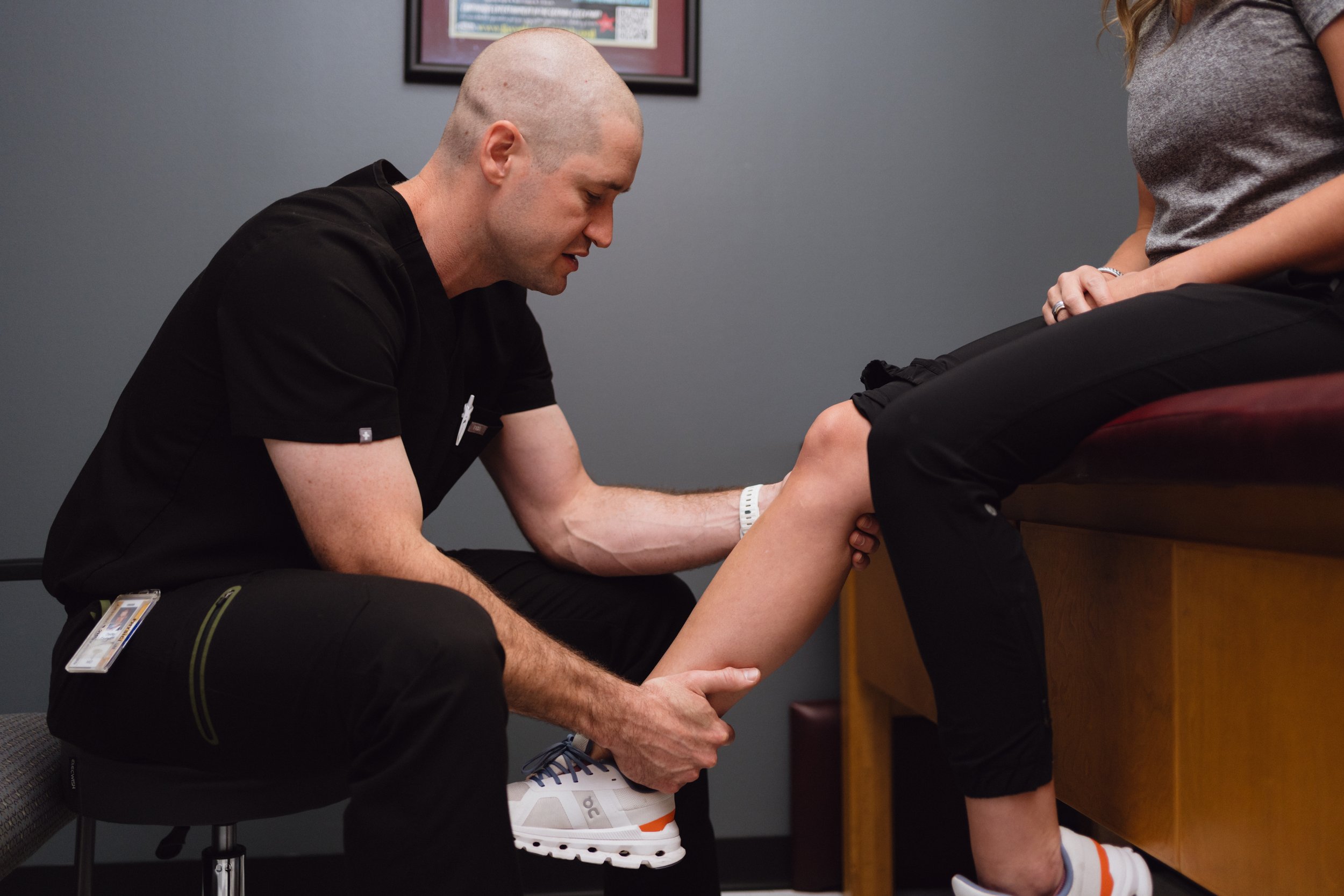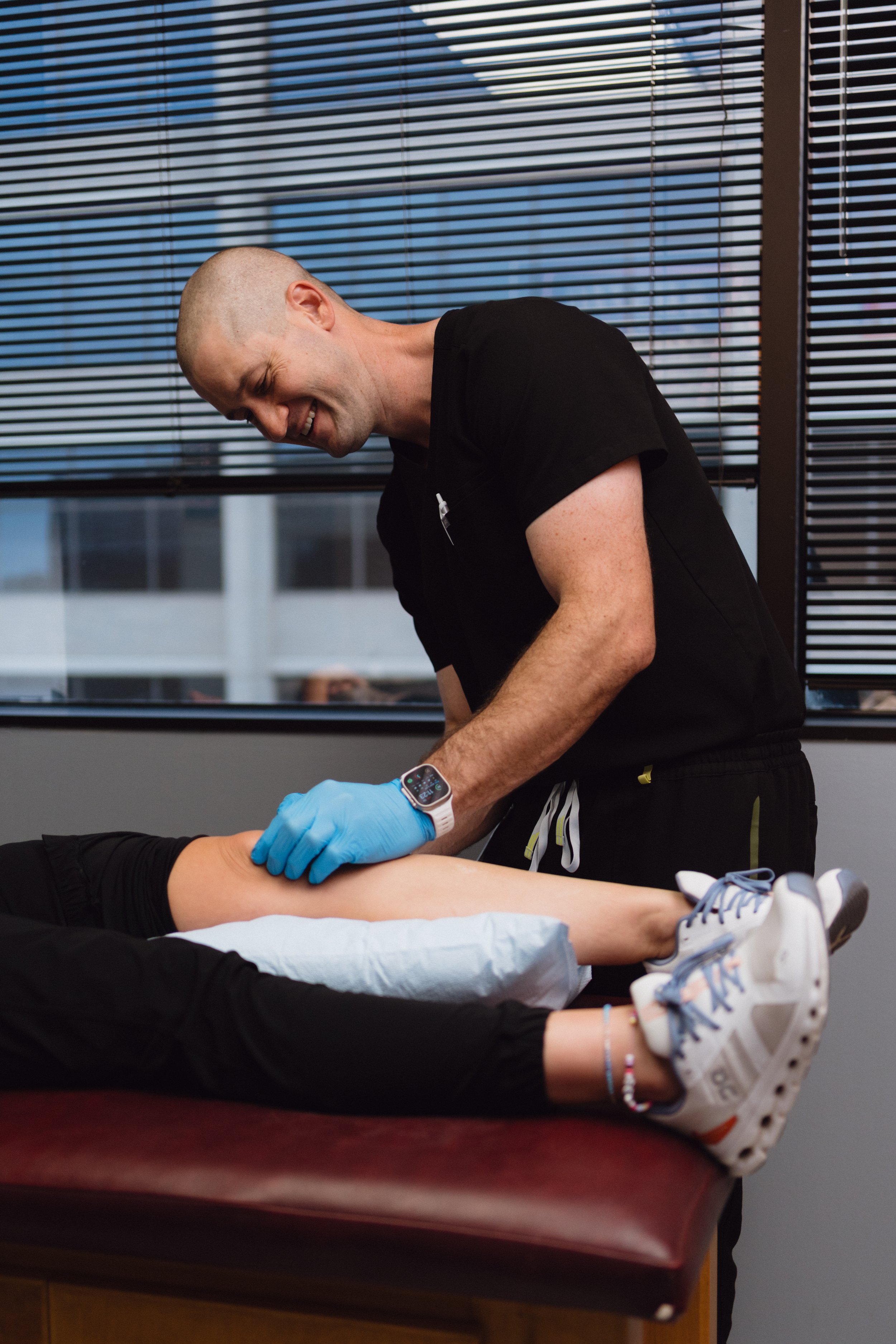
Knee Ligament Injuries in San Antonio
Understanding Ligament Injuries
Ligaments are strong, fibrous bands of tissue that connect bones within a joint, providing stability and guiding proper movement. These vital structures prevent excessive motion and help maintain joint alignment during physical activity.
When ligaments are overstretched or torn, it can result in instability, pain, and reduced mobility. The knee, one of the most complex and active joints in the body, is particularly vulnerable to ligament injuries due to its crucial role in supporting weight, facilitating movement, and absorbing impact during activities.
ACL (Anterior Cruciate Ligament)
A common injury among athletes, the ACL often tears during sudden stops, direction changes, or awkward landings. It causes significant instability and typically requires surgical repair.
MCL (Medial Collateral Ligament)
Located on the inner knee, the MCL is vulnerable to injuries from impacts or twisting movements. MCL tears are often accompanied by damage to other ligaments.LCL (Lateral Collateral Ligament)
The LCL, on the outer knee, is less commonly injured but can tear from trauma or excessive outward force on the joint.PCL (Posterior Cruciate Ligament)
The PCL stabilizes the knee’s backward motion and is most often injured by high-impact events like car accidents or falls.
Ligament injuries range from mild sprains to complete tears, and the severity often dictates the treatment approach. A thorough understanding of these ligaments underscores the importance of proper diagnosis and care for effective recovery.
Common Types of Knee Ligament Injuries
Tim Kennedy’s Road to Recovery:
Expert Treatment for an ACL Injury
Tim needed an ACL reconstruction and a surgeon that was equipped with the skill and experience to get him back to the insanity workouts, jumping out of planes, swimming in the middle of the ocean and much more.
Common Causes of Ligament Injuries
-
Sports
High-intensity sports like soccer, football, basketball, and skiing often require rapid direction changes, sudden jumps, or forceful landings, all of which can put significant strain on the knee ligaments, especially the ACL.
-
Falls or Accidents
A fall, particularly when the knee twists or bends in an unnatural way, can lead to ligament damage. Additionally, car accidents and other traumatic impacts to the knee are common causes of ligament injuries.
-
Twisting Movements
Twisting the knee, especially while the foot remains planted on the ground, can stretch or tear ligaments, with the ACL and MCL being particularly vulnerable.
Treatment options for Knee Ligament Injuries
Non-Surgical Treatment Options
For less severe ligament injuries, initial treatments such as rest, ice, braces, and physical therapy help manage pain, reduce swelling, and restore knee function. In some cases, joint injections can also be an effective part of treatment. These may include:
Corticosteroid Injections to reduce inflammation and provide pain relief.
Hyaluronic Acid Injections to improve joint lubrication and alleviate discomfort.
PRP Injections to promote healing and support tissue regeneration.
These options can help manage symptoms and improve knee function without the need for surgery, allowing for a more gradual recovery.
Surgical Treatments
If conservative treatments aren't effective or the injury is more severe, surgery (e.g., ACL reconstruction) may be needed to restore stability and functionality.
Our Locations
-

Alamo Heights
Address: 423 Treeline Park, Suite 350, San Antonio, TX 78209
-

Westover Hills
Address: 11212 State Highway 151, Medical Plaza 1, 2nd Floor, Suite 200, San Antonio, TX 78251
-

Medical Center
ADDRESS: 2833 Babcock Rd, Tower 2, Suite 435, San Antonio, TX 78229
-

Boerne
ADDRESS: 138 Old San Antonio Rd, Suite 302, Boerne, TX 78006
-

Southside
8726 Poteet Jourdanton Fwy Acc Rd, San Antonio, TX 78224
-

Castroville
-

Schertz
Address: 6051 FM 3009, Suite 260, Schertz, TX 78154




